3,3'-二羟基联苯胺, 99.9%,3,3'-Dihydroxybenzidine
产品编号:西域试剂-WR199387| CAS NO:2373-98-0| MDL NO:MFCD00039149| 分子式:C12H12N2O2| 分子量:216.24
本网站销售的所有产品仅用于工业应用或者科学研究等非医疗目的,不可用于人类或动物的临床诊断或者治疗,非药用,非食用,
| 产品名称 | 3,3'-二羟基联苯胺, 99.9% |
|---|---|
| 英文名称 | 3,3'-Dihydroxybenzidine |
| CAS编号 | 2373-98-0 |
| 产品熔点 | 292 °C |
| 产品沸点 | 440.7±45.0 °C at 760 mmHg |
| 产品密度 | 1.4±0.1 g/cm3 |
| 产品闪点 | 220.3±28.7 °C |
| 精确质量 | 216.089874 |
| PSA | 92.50000 |
| LogP | 0.55 |
| 蒸气压 | 0.0±1.1 mmHg at 25°C |
| 折射率 | 1.742 |
相关文档
化学品安全说明书(MSDS)
下载MSDS质检证书(COA)
相关产品
| 危害码 (欧洲) | T |
|---|---|
| 风险声明 (欧洲) | 40 |
| 安全声明 (欧洲) | S22-S53 |
| RTECS号 | DV4900000 |
| 海关编码 | 2922199090 |
|
Section I.Chemical Product and Company Identification Chemical Name 3,3'-Dihydroxybenzidine Portland OR Synonym[1,1'-Biphenyl]-3,3'-diol, 4,4'-diamino- (CA INDEX NAME); 4,4'-Diamino-3,3'-dihydroxybiphenyl; Benzidine-3,3'-diol Chemical FormulaC12H12N2O2
2373-98-0 CAS Number Section II.Composition and Information on Ingredients Chemical NameCAS Number Percent (%)TLV/PELToxicology Data 3,3'-Dihydroxybenzidine2373-98-0Min. 98.0This chemical is classified as aNot available. (HPLC,T)carcinogen. There is no acceptable exposure limit for a carcinogen. Section III. Hazards Identification Irritating to eyes and skin on contact. Inhalation causes irritation of the lungs and respiratory system. Inflammation of the Acute Health Effects eye is characterized by redness, watering, and itching. Skin inflammation is characterized by itching, scaling, reddening, or, occasionally, blistering. Follow safe industrial hygiene practices and always wear proper protective equipment when handling this compound. CARCINOGENIC EFFECTS : Carcinogenic by RTECS criteria. Chronic Health Effects MUTAGENIC EFFECTS : Not available. TERATOGENIC EFFECTS : Tumorigenic effects. Rat TDLo Oral 9950 mg/kg for 52 weeks intermittent Toxic Effects: Tumorigenic - Neoplastic by RTECS criteria Skin and Appendages - Tumors Rat TDLo Subcutaneous 5900 mg/kg for 43 weeks intermittent Toxic Effects: Tumorigenic - Carcinogenic by RTECS criteria Gastrointestinal - Tumors Liver - Tumors Mouse TDLo Oral 11 gm/kg for 47 weeks intermittent Toxic Effects: Tumorigenic - Equivocal tumorigenic agent by RTECS criteria Lung, Thorax, or Respiration - Tumors Blood - Tumors DEVELOPMENTAL TOXICITY: Not available. Repeated or prolonged exposure to this compound is not known to aggravate existing medical conditions. Section IV.First Aid Measures Eye ContactCheck for and remove any contact lenses. In case of contact, immediately flush eyes with plenty of water for at least 15 minutes. Get medical attention. Skin ContactIn case of contact, immediately flush skin with plenty of water. Remove contaminated clothing and shoes. Wash clothing before reuse. Thoroughly clean shoes before reuse. Get medical attention. InhalationIf the victim is not breathing, perform mouth-to-mouth resuscitation. Loosen tight clothing such as a collar, tie, belt or waistband. If breathing is difficult, oxygen can be administered. Seek medical attention if respiration problems do not improve. IngestionINDUCE VOMITING by sticking finger in throat. Lower the head so that the vomit will not reenter the mouth and throat. Loosen tight clothing such as a collar, tie, belt or waistband. If the victim is not breathing, perform mouth-to-mouth resuscitation. Examine the lips and mouth to ascertain whether the tissues are damaged, a possible indication that the toxic material was ingested; the absence of such signs, however, is not conclusive. Continued on Next Page 3,3'-Dihydroxybenzidine Section V.Fire and Explosion Data Not available. FlammabilityMay be combustible at high temperature.Auto-Ignition Flammable LimitsNot available. Flash PointsNot available. Combustion ProductsThese products are toxic carbon oxides (CO, CO2), nitrogen oxides (NO, NO2). Fire Hazards Not available. Risks of explosion of the product in presence of mechanical impact: Not available. Explosion Hazards Risks of explosion of the product in presence of static discharge: Not available. Fire Fighting Media SMALL FIRE: Use DRY chemical powder. LARGE FIRE: Use water spray, fog or foam. DO NOT use water jet. and Instructions Consult with local fire authorities before attempting large scale fire-fighting operations. Section VI.Accidental Release Measures Irritating material. Carcinogenic material. Spill Cleanup Use a shovel to put the material into a convenient waste disposal container. Consult federal, state, and/or local authorities for Instructions assistance on disposal. Section VII. Handling and Storage IRRITANT. CARCINOGEN. Keep away from heat. Mechanical exhaust required. When not in use, tightly seal the container Handling and Storage and store in a dry, cool place. Avoid excessive heat and light. Do not breathe dust. Information Always store away from incompatible compounds such as oxidizing agents. Section VIII. Exposure Controls/Personal Protection Use process enclosures, local exhaust ventilation, or other engineering controls to keep airborne levels below recommended Engineering Controls exposure limits. If user operations generate dust, fume or mist, use ventilation to keep exposure to airborne contaminants below the exposure limit. Splash goggles. Lab coat. Dust respirator. Boots. Gloves. Suggested protective clothing might not be sufficient; consult a Personal Protection specialist BEFORE handling this product. Be sure to use a MSHA/NIOSH approved respirator or equivalent. Exposure LimitsThis chemical is classified as a carcinogen. There is no acceptable exposure limit for a carcinogen. Section IX. Physical and Chemical Properties Solid. (Light yellow ~ reddish-yellow,Solubility Physical state @ 20°CSoluble in DMF. crystalline powder ~ powder.) Very slightly soluble in water. Not available. Specific Gravity Molecular Weight216.24Partition CoefficientNot available. Boiling PointNot available.Not applicable. Vapor Pressure Melting Point292°C (557.6°F)Vapor DensityNot available. Not available.Not available. Refractive IndexVolatility Critical TemperatureNot available.OdorNot available. Not available.Not available. ViscosityTaste Section X.Stability and Reactivity Data Stability This material is stable if stored under proper conditions. (See Section VII for instructions) Conditions of InstabilityAvoid excessive heat and light. IncompatibilitiesReactive with oxidizing agents. Section XI. Toxicological Information RTECS NumberDV4900000 Eye Contact. Ingestion. Inhalation. Routes of Exposure Not available. Toxicity Data Continued on Next Page 3,3'-Dihydroxybenzidine Chronic Toxic EffectsCARCINOGENIC EFFECTS : Carcinogenic by RTECS criteria. MUTAGENIC EFFECTS : Not available. TERATOGENIC EFFECTS : Tumorigenic effects. Rat TDLo Oral 9950 mg/kg for 52 weeks intermittent Toxic Effects: Tumorigenic - Neoplastic by RTECS criteria Skin and Appendages - Tumors Rat TDLo Subcutaneous 5900 mg/kg for 43 weeks intermittent Toxic Effects: Tumorigenic - Carcinogenic by RTECS criteria Gastrointestinal - Tumors Liver - Tumors Mouse TDLo Oral 11 gm/kg for 47 weeks intermittent Toxic Effects: Tumorigenic - Equivocal tumorigenic agent by RTECS criteria Lung, Thorax, or Respiration - Tumors Blood - Tumors DEVELOPMENTAL TOXICITY: Not available. Repeated or prolonged exposure to this compound is not known to aggravate existing medical conditions. Acute Toxic EffectsIrritating to eyes and skin on contact. Inhalation causes irritation of the lungs and respiratory system. Inflammation of the eye is characterized by redness, watering, and itching. Skin inflammation is characterized by itching, scaling, reddening, or, occasionally, blistering. Follow safe industrial hygiene practices and always wear proper protective equipment when handling this compound. Section XII.Ecological Information Not available. Ecotoxicity Environmental FateNot available. Section XIII. Disposal Considerations Recycle to process, if possible. Consult your local regional authorities. You may be able to dissolve or mix material with a Waste Disposal combustible solvent and burn in a chemical incinerator equipped with an afterburner and scrubber system. Observe all federal, state and local regulations when disposing of the substance. Section XIV. Transport Information DOT ClassificationNot a DOT controlled material (United States). PIN NumberNot applicable. Proper Shipping NameNot applicable. Packing Group (PG)Not applicable. DOT Pictograms Section XV. Other Regulatory Information and Pictograms TSCA Chemical InventoryThis product is NOT on the EPA Toxic Substances Control Act (TSCA) inventory. The following notices are required by 40 CFR 720.36 (C) for those products not on the inventory list: (EPA) (i) These products are supplied solely for use in research and development by or under the supervision of a technically qualified individual as defined in 40 CFR 720.0 et sec. (ii) The health risks of these products have not been fully determined. Any information that is or becomes available will be supplied on an MSDS sheet. WHMIS ClassificationCLASS D-2B: Material causing other toxic effects (TOXIC). (Canada) EINECS Number (EEC)Not available. EEC Risk StatementsR36/37/38- Irritating to eyes, respiratory system and skin. R45- May cause cancer. 3,3'-Dihydroxybenzidine TCI laboratory chemicals are for research purposes only and are NOT intended for use as drugs, food additives, households, or pesticides. The information herein is believed to be correct, but does not claim to be all inclusive and should be used only as a guide. Neither the above named supplier nor any of its subsidiaries assumes any liability whatsoever for the accuracy or completeness of the information contained herein. Final determination of suitability of any material is the sole responsibility of the user. All chemical reagents must be handled with the recognition that their chemical, physiological, toxicological, and hazardous properties have not been fully investigated or determined. All chemical reagents should be handled only by individuals who are familiar with their potential hazards and who have been fully trained in proper safety, laboratory, and chemical handling procedures. Although certain hazards are described herein, we can not guarantee that these are the only hazards which exist. Our MSDS sheets are based only on data available at the time of shipping and are subject to change without notice as new information is obtained. Avoid long storage periods since the product is subject to degradation with age and may become more dangerous or hazardous. It is the responsibility of the user to request updated MSDS sheets for products that are stored for extended periods. Disposal of unused product must be undertaken by qualified personnel who are knowledgeable in all applicable regulations and follow all pertinent safety precautions including the use of appropriate protective equipment (e.g. protective goggles, protective clothing, breathing equipment, facial mask, fume hood). For proper handling and disposal, always comply with federal, state, and local regulations. SECTION 16 - ADDITIONAL INFORMATION N/A |
|
~% 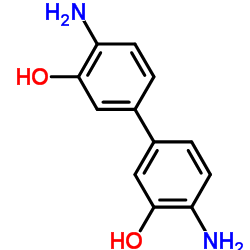
2373-98-0 |
| 文献:DE727869 , ; DRP/DRBP Org.Chem. |
|
~% 
2373-98-0 |
| 文献:DE727869 , ; DRP/DRBP Org.Chem. |
|
~% 
2373-98-0 |
| 文献:DE488611 ; Fortschr. Teerfarbenfabr. Verw. Industriezweige, vol. 16, p. 343 |
|
~% 
2373-98-0 |
| 文献:CH2371187 , ; |
|
~% 
2373-98-0 |
| 文献:Journal of the Chemical Society, , p. 149,150 DE488611 ; Fortschr. Teerfarbenfabr. Verw. Industriezweige, vol. 16, p. 343 |
|
~% 
2373-98-0 |
| 文献:Journal of the Chemical Society, , p. 152 |
|
~% 
2373-98-0 |
| 文献:DE488611 ; Fortschr. Teerfarbenfabr. Verw. Industriezweige, vol. 16, p. 343 |
| 上游产品 6 | |
|---|---|
| 下游产品 2 | |

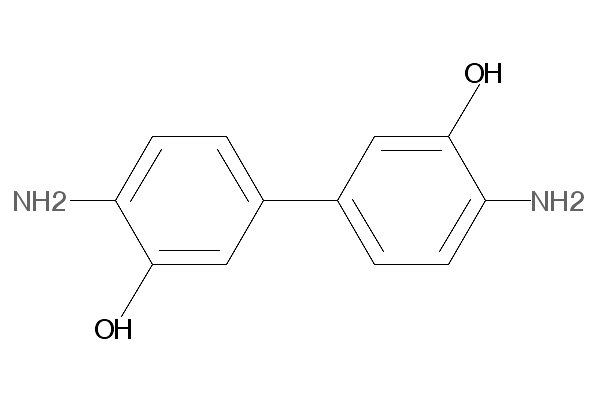
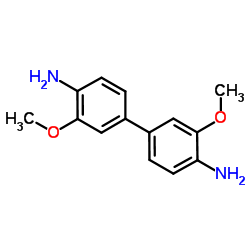
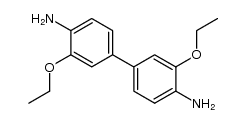
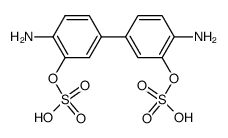
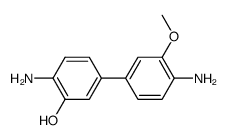

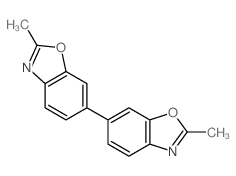

![3-[2-amino-5-[4-amino-3-(3-sulfopropoxy)phenyl]phenoxy]propane-1-sulfonic acid结构式](/20230522/56716-06-4.png)
![Acetamide,N,N'-(3,3'-dihydroxy[1,1'-biphenyl]-4,4'-diyl)bis-结构式](/20230522/6309-67-7.png)





 浙公网安备 33010802013016号
浙公网安备 33010802013016号